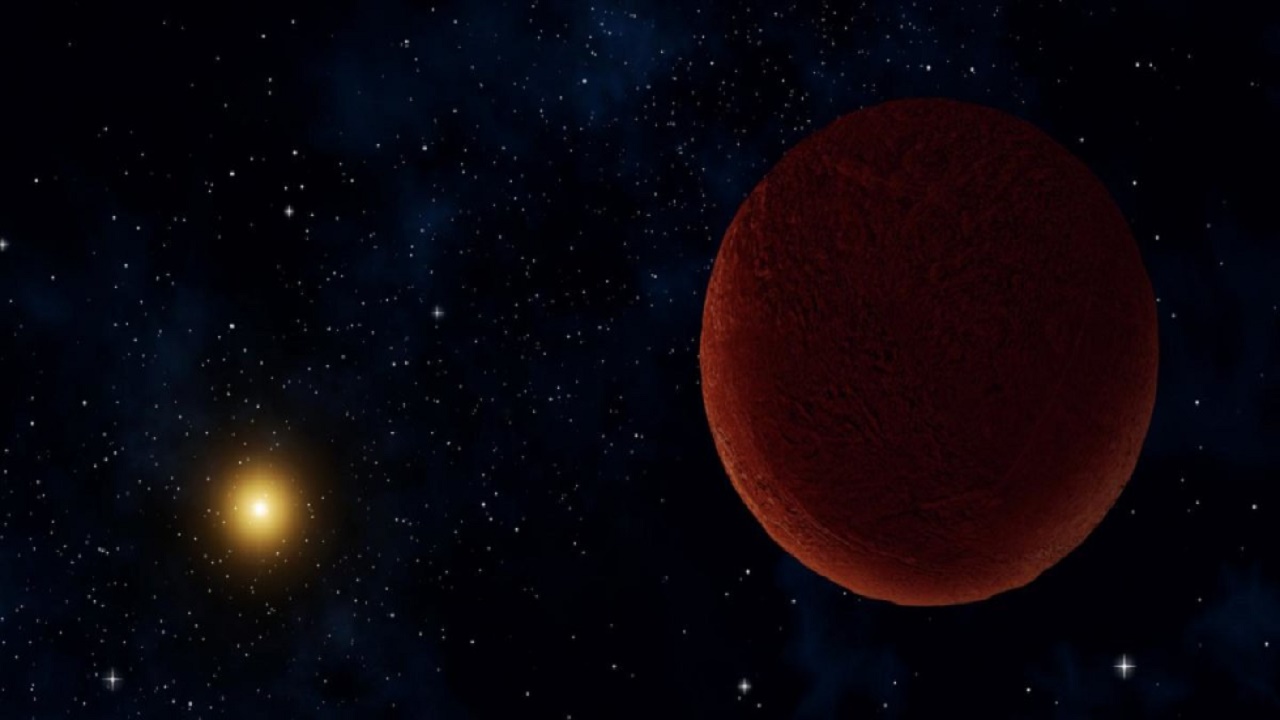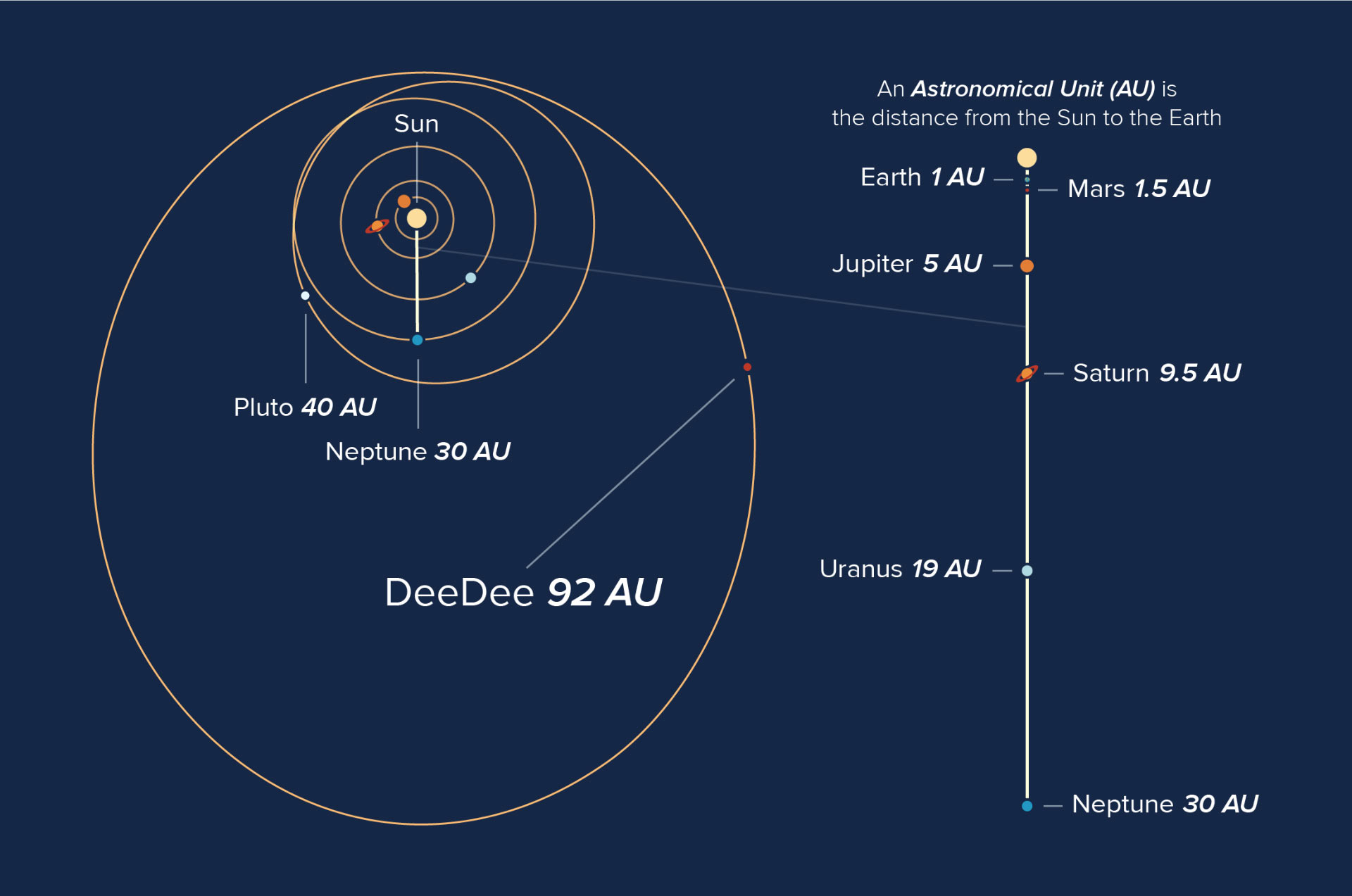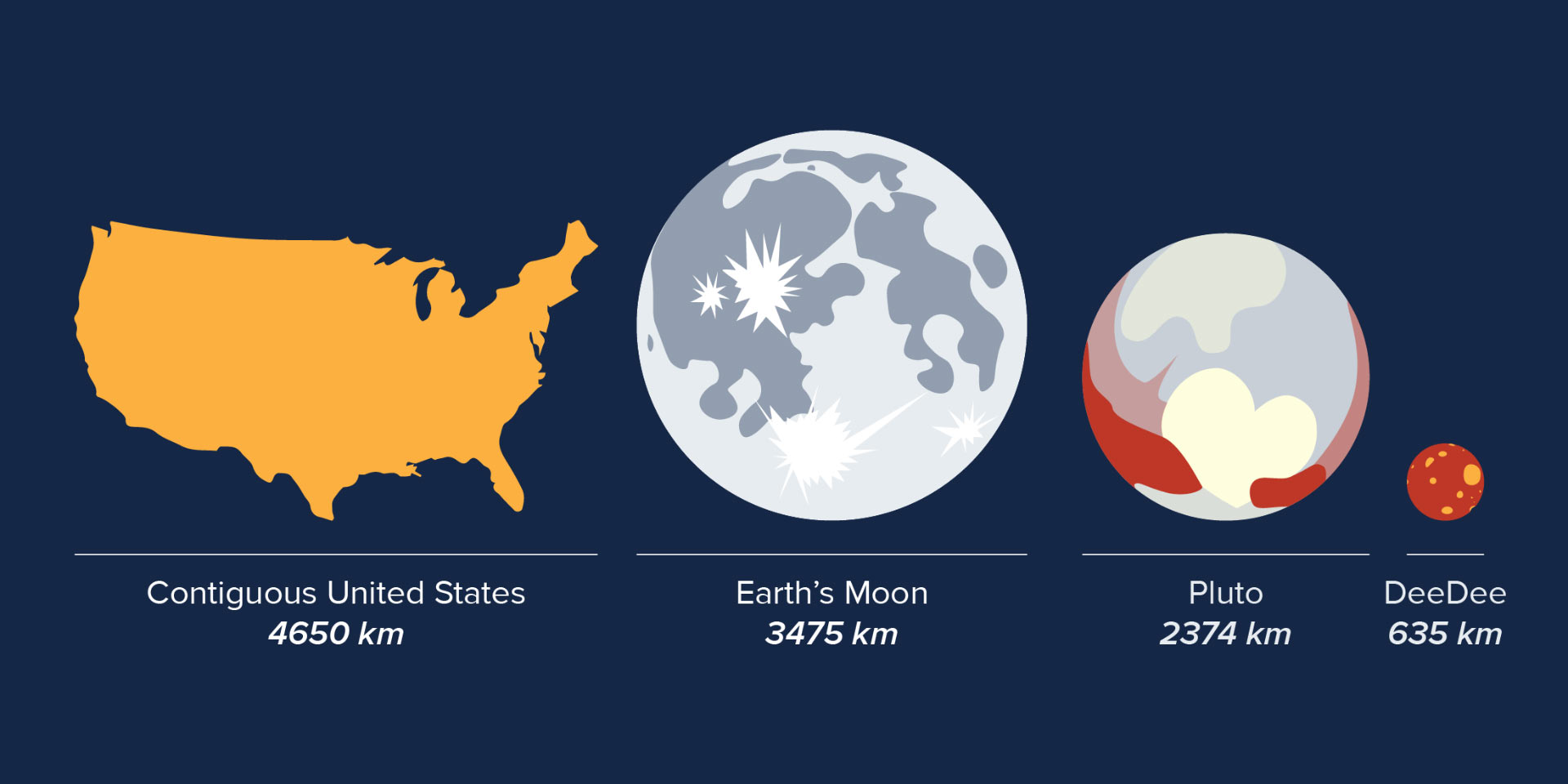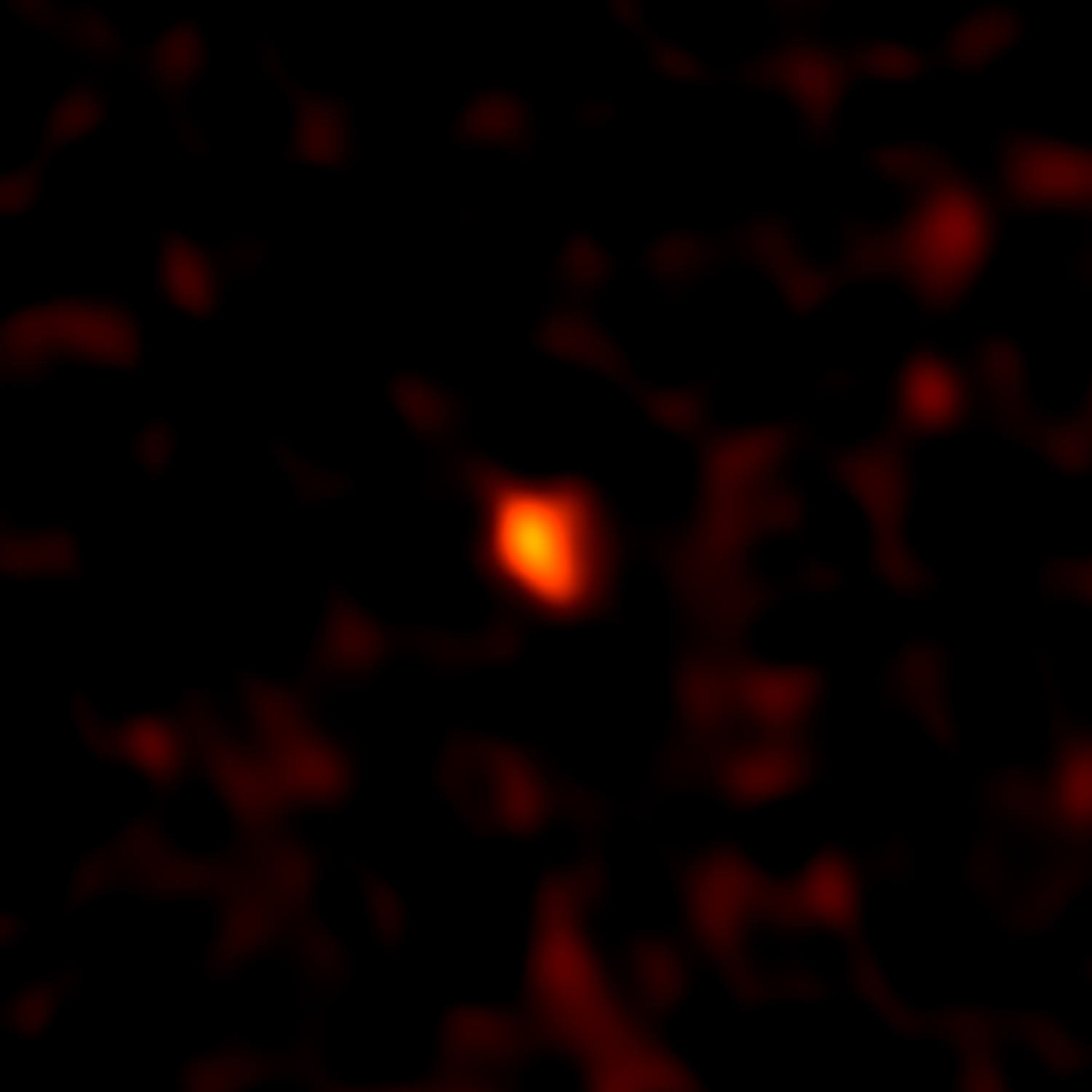Astronomers have made a sensational discovery in the outermost regions of the solar system. They have observed a hitherto unknown dwarf planet which is three times as far away from the sun as Pluto.

The astronomers made this very rare and sensational find in the outermost parts of the solar system.
The little ball has been named ‘2014 UZ224’ but is more informally called ‘DeeDee’, short for Distant Dwarf.
DeeDee is extremely difficult to detect with current technology and the achievement could be compared to seeing a lit candle halfway between the Earth and the Moon.
Astronomers using the Atacama Large Millimeter/submillimeter Array (ALMA) discovered something big on the other side of the Kuiper belt in 2014. Since then, the ALMA telescope in Chile has been searching that area ever since.

DeeDee revolves around the sun at a distance of about 92 astronomical units (AU). An astronomical unit is an average distance from Earth to the Sun or about 150 million kilometers.
It has a diameter of 635 kilometers – big enough for it to be round – meeting the requirements for it to be called the dwarf planet rather than an asteroid.

To upgrade to planet status, however, it must also have cleared its orbit on other objects, but that this little sphere has yet to do.
Objects like DeeDee are cosmic leftovers from the formation of the solar system and there are many more to be found. There are presently four other recognized dwarf planets in the solar system, but scientists think there could be dozens or more objects that size that have yet to be discovered, according to NASA.

This discovery is exciting since it proves that it is possible to detect very distant, slowly moving objects in our own solar system and perhaps the very same techniques could be used to detect the hypothesized “Planet Nine” that may reside far beyond DeeDee.
Reference:
D. W. Gerdes, M. Sako et al. Discovery and Physical Characterization of a Large Scattered Disk Object at 92 au DOI: 10.3847/2041-8213/aa64d8











![OpenAI. (2025). ChatGPT [Large language model]. https://chatgpt.com](https://www.illustratedcuriosity.com/files/media/55099/2638a982-b4de-4913-8a1c-1479df352bf3-350x260.webp)










